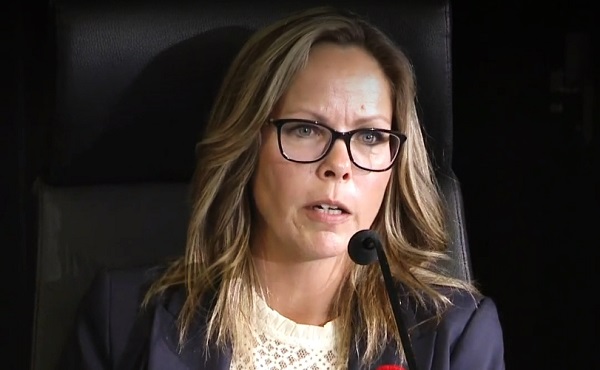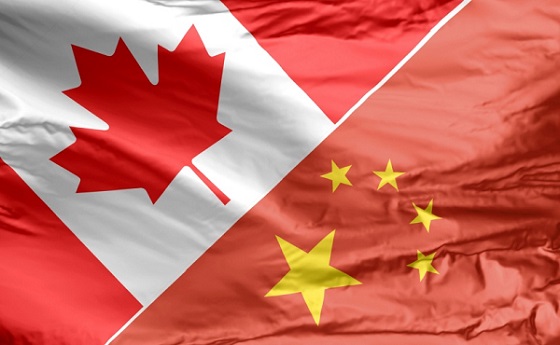COVID-19
Conservative MPs demand investigation into $300 million in gov’t losses from COVID vaccine development

From LifeSiteNews
Public Health Agency of Canada said it lost $150 million on an unfulfilled COVID jab contract in 2022 and an additional $173 million that went to Quebec-based Medicago, Inc., which is shutting down in 2023
Canada’s House of Commons health committee is expected to soon vote on a motion demanding answers into how more than $300 million of taxpayer money was lost on failed COVID jab ventures with pharmaceutical companies.
It was recently revealed that the Public Health Agency of Canada (PHAC) lost $150 million on an unfulfilled COVID jab contract with an undisclosed entity in 2022. In addition, $173 million given to Quebec-based Medicago Inc., which said it would be shutting down in 2023 due to a failed development of its own plant-based COVID shot, is now lost. Medicago is a subsidiary of Japan-based Mitsubishi Chemical Group.
The losses came to light after they were discovered in the government’s 2022-2023 public accounts report, which was tabled on October 24.
As a result, Conservative Party of Canada (CPC) MPs have called for a parliamentary committee to investigate the severe losses related to COVID jab development in order to hold both PHAC and the federal government of Prime Minister Justin Trudeau accountable.
Conservative MP Stephen Ellis said when speaking about the motion Monday before the Standing Committee on Health that he believes Canadians “deserve and demand an explanation for how [the Liberals] believe that they could possibly bury, hide, and lose $300 million in taxpayer money.”
Ellis said the Trudeau government’s spending of more than $300 million shows severe government waste.
CPC MP Robert Kitchen said that the “millions” being “wasted” are not being accounted for, and that this is “shocking when we know Canadians who are suffering and struggling to make ends meet.”
“The average Canadian that’s out there sits and talks about nickels and dimes,” he said.
“Now they’re talking millions of dollars and they still think they are just dimes,” he added.
The health committee is soon expected to pass a motion to hold “four hours of meetings on the government’s Advance Purchase Agreement for vaccines with Medicago.”
The motion calls for Minister of Health Mark Holland, PHAC president Heather Jeffrey, Treasury Board president Anita Anand and other officials from the health ministry to be called to speak to the committee.
Medicago’s failed contract called for 76 million doses of its own COVID jab to be made. However, not one was ever delivered.
Of note is that Medicago’s COVID jab plant is in the Québec City riding of Trudeau’s Public Works Minister Jean-Yves Duclos.
CPC MP Pierre Paul-Hus said that “Canadians are the ones who have been paying” for Liberal waste.
“The company gets millions and then goes back to Japan and the government says, ‘Oh, well, too bad, it doesn’t matter.’ This is serious. There are limits,” he said.
Trudeau’s MPs admit that the motion is likely to pass.
As for PHAC, it has acknowledged that it did indeed have an “unfulfilled contract by a vendor” that involved $150 million. It said it was marked under a section titled “Losses of public money due to an offence, illegal act or accident.”
Trudeau government pushed experimental COVID jabs
The COVID shots were heavily promoted by the Trudeau government. During the so-called COVID pandemic, he referred to those who chose not to get the experimental COVID shots as terrible people.
In 2021, Trudeau said Canadians “vehemently opposed to vaccination” do “not believe in science,” are “often misogynists, often racists,” and even questioned whether Canada should continue to “tolerate these people.”
In April, Trudeau came under fire after claiming he did not “force” anyone to take the COVID-19 shots.
Health Canada only approved mRNA-based COVID shots made in other countries, such as Pfizer’s and Moderna’s, as well as one from Johnson and Johnson.
In September 2023, Health Canada approved a revised Moderna mRNA-based COVID shot despite research showing that 1 in 35 recipients of the booster ended up with myocardial damage.
There is mounting evidence that all mRNA-based COVID injections carry extreme risks, including for children.
A recent study done by researchers at the Canada-based Correlation Research in the Public Interest found that 17 countries have a “definite causal link” between peaks in all-cause mortality and the fast rollouts of the COVID shots and boosters.
LifeSiteNews reported last month how the Polyomavirus Simian Virus 40 (SV40), which is a monkey-linked DNA sequence known to cause cancer when it was used in old polio vaccines, has been confirmed by Health Canada to be present in the Pfizer COVID shot, a fact that was not disclosed by the vaccine maker to officials.
The Conservative Party, although silent early on during the COVID crisis, later came out opposing COVID mandates.
A recent bill championed by party leader Pierre Poilievre that would have given Canadians back their “bodily autonomy” by banning future jab mandates was voted down after Trudeau’s Liberals and other parties rejected it.
Adverse effects from the first round of COVID shots have resulted in a growing number of Canadians filing for financial compensation over injuries from the jabs via the federal Vaccine Injury Program (VISP).
Thus far, VISP has already paid over $6 million to those injured by COVID injections, with 2,000 claims remaining to be settled.
COVID-19
Canadian veteran challenges conviction for guarding War Memorial during Freedom Convoy

From LifeSiteNews
When the convoy first came to Ottawa, allegations were floated that the memorial had been desecrated. After learning of this, Evely quickly organized a group of veterans to stand guard around the clock to protect the area.
A Canadian veteran appealed to the Ontario courts after he was convicted for organizing a guard around the National War Memorial during the Freedom Convoy.
In an October press release, the Justice Centre for Constitutional Freedoms (JCCF) announced that an appeal has been filed in the Ontario Court of Appeals on behalf of Master Warrant Officer (Ret’d) Jeffrey Evely over his conviction for mischief and obstructing police while on his way to guard the Ottawa War Memorial during the 2022 Freedom Convoy.
“By locking down large sections of downtown Ottawa, the police were effectively preventing all civilians from accessing public areas and greatly exceeded their powers under the common law,” constitutional lawyer Chris Fleury explained.
“This case raises issues that have implications for protests across the province and the country. We are hopeful that the Ontario Court of Appeal will agree and grant leave to appeal,” he added.
The appeal argues that police overstepped their authority in their response to the 2022 protest of COVID mandates. Police actions at the time included locking down the Ottawa core, establishing checkpoints, and arresting protesters.
In September 2024, Everly was convicted of mischief and obstruction after his involvement in the 2022 Freedom Convoy, which protested COVID mandates by gathering Canadians in front of Parliament in Ottawa.
As LifeSiteNews previously reported, when the convoy first came to Ottawa, allegations were floated that the memorial had been desecrated. After learning of this, Evely quickly organized a group of veterans to stand guard around the clock to protect the area.
However, under former Prime Minister Justin Trudeau’s use of the Emergencies Act, many parts of downtown Ottawa were blocked to the public, and a vigilant police force roamed the streets.
It was during this time that Evely was arrested for entering a closed off section of downtown Ottawa during the early hours of February 19, 2022. He had been on his way to take the 4:25 a.m. shift protecting the Ottawa War Memorial.
As Evely walked to the memorial, he was allegedly told to stop by police. According to the police, Evely “ran for a short distance before being confronted by two additional police officers.”
He was forcibly pushed to the ground, landing face first. The veteran was then arrested and charged with mischief and obstructing police.
At the time, the use of the EA was justified by claims that the protest was “violent,” a claim that has still gone unsubstantiated.
In fact, videos of the protest against COVID regulations and shot mandates show Canadians from across the country gathering outside Parliament engaged in dancing, street hockey, and other family-friendly activities.
Indeed, the only acts of violence caught on video were carried out against the protesters after the Trudeau government directed police to end the protest. One such video showed an elderly women being trampled by a police horse.
While the officers’ actions were originally sanctioned under the EA, Federal Court Justice Richard Mosley ruled that Trudeau was “not justified” in invoking the EA, forcing Crown prosecutors to adopt a different strategy.
Now, Crown prosecutors allege that the common law granted police the authority to stop and detain Evely, regardless of the EA.
However, Evely and his lawyers have challenged this argument under section 9 of the Canadian Charter of Rights and Freedoms, insisting that his “arrest and detention were arbitrary.”
Earlier this month, Freedom Convoy organizers Tamara Lich and Chris Barber were sentenced to 18-month house arrest after a harrowing 25-month trial process. Many have condemned the sentence, warning it amounts to “political persecution” of those who stand up to the Liberal government.
COVID-19
Freedom Convoy leader Tamara Lich says ‘I am not to leave the house’ while serving sentence

From LifeSiteNews
‘I was hoping to be able to drop off and pick up my grandsons from school, but apparently that request will have to go to a judge’
Freedom Convoy leader Tamara Lich detailed her restrictive house arrest conditions, revealing she is “not” able to leave her house or even pick up her grandkids from school without permission from the state.
Lich wrote in a X post on Wednesday that this past Tuesday was her first meeting with her probation officer, whom she described as “fair and efficient,” adding that she was handed the conditions set out by the judge.
“I was hoping to be able to drop off and pick up my grandsons from school, but apparently that request will have to go to a judge under a variation application, so we’ll just leave everything as is for now,” she wrote.
Lich noted that she has another interview with her probation officer next week to “assess the level of risk I pose to re-offend.”
“It sounds like it’ll basically be a questionnaire to assess my mental state and any dangers I may pose to society,” she said.
While it is common for those on house arrest to have to ask for permission to leave their house, sometimes arrangements can be made otherwise.
On October 7, Ontario Court Justice Heather Perkins-McVey sentenced Lich and Chris Barber to 18 months’ house arrest after being convicted earlier in the year convicted of “mischief.”
Lich was given 18 months less time already spent in custody, amounting to 15 1/2 months.
As reported by LifeSiteNews, the Canadian government was hoping to put Lich in jail for no less than seven years and Barber for eight years for their roles in the 2022 protests against COVID mandates.
Interestingly, Perkins-McVey said about Lich and Barber during the sentencing, “They came with the noblest of intent and did not advocate for violence.”
Lich said that her probation officer “informed me of the consequences should I breach these conditions, and I am not to leave the house, even for the approved ‘necessities of life’ without contacting her to let her know where I’ll be and for how long,” she wrote.
“She will then provide a letter stating I have been granted permission to be out in society. I’m to have my papers on my person at all times and ready to produce should I be pulled over or seen by law enforcement out and about.”
Lich said that the probation officer did print a letter “before I left, so I could stop at the optometrist and dentist offices on my way home.”
She said that her official release date is January 21, 2027, which she said amounts to “1,799 days after my initial arrest.”
As reported by LifeSiteNews, Lich, reflecting on her recent house arrest verdict, said she has no “remorse” and will not “apologize” for leading a movement that demanded an end to all COVID mandates.
LifeSiteNews reported that Conservative Party leader Pierre Poilievre offered his thoughts on the sentencing, wishing them a “peaceful” life while stopping short of blasting the sentence as his fellow MPs did.
In early 2022, the Freedom Convoy saw thousands of Canadians from coast to coast come to Ottawa to demand an end to COVID mandates in all forms. Despite the peaceful nature of the protest, Trudeau’s government enacted the never-before-used Emergencies Act (EA) on February 14, 2022.
-

 Crime1 day ago
Crime1 day agoPublic Execution of Anti-Cartel Mayor in Michoacán Prompts U.S. Offer to Intervene Against Cartels
-

 Business2 days ago
Business2 days agoMystery cloaks Doug Ford’s funding of media through Ontario advertising subsidy
-

 Environment2 days ago
Environment2 days agoThe era of Climate Change Alarmism is over
-

 Justice1 day ago
Justice1 day agoA Justice System That Hates Punishment Can’t Protect the Innocent
-

 Alberta22 hours ago
Alberta22 hours agoCanada’s heavy oil finds new fans as global demand rises
-

 Health20 hours ago
Health20 hours agoRFK Jr’s argument for studying efficacy of various vaccines
-

 Aristotle Foundation1 day ago
Aristotle Foundation1 day agoB.C. government laid groundwork for turning private property into Aboriginal land
-

 Brownstone Institute10 hours ago
Brownstone Institute10 hours agoBizarre Decisions about Nicotine Pouches Lead to the Wrong Products on Shelves








